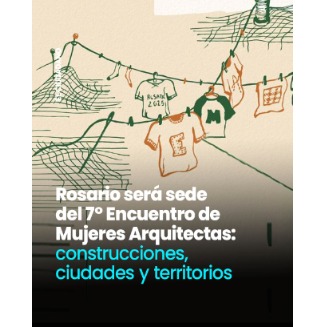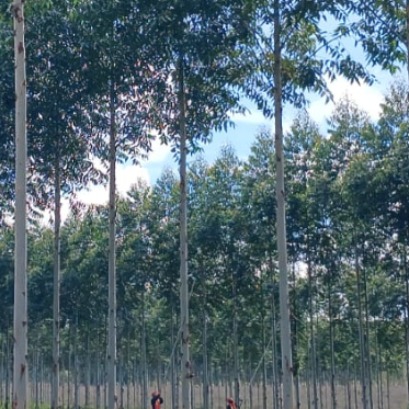
Rosario will host the 7th Meeting of Women Architects: Constructions, Cities and Territories
The event will be held on August 14, 15 and 16 at the headquarters of the College of Architecture and Urbanism of the Province of Santa Fe, located in Belgrano Avenue 646. Participation is free for professionals, students, researchers, architecture workers and habitat who are interested in building an open and plural space. Requires prior registration
Rosario arrives in the seventh edition of the national event, which annually summons professionals of architecture from all over the country. It is presented as a space for reflection and collective action that seeks to make visible, strengthen and project the multiple ways in which architect women intervene in the construction of our cities and territories.In this opportunity, the meeting of women architects - Ema 7 - will focus on care plots, understanding not only as a daily practice, but as a central dimension of thought and architectural production. The care as a structuring value of inhabiting, as a principle that guides the design, management and transformation of the constructed environment. This perspective implies critically reviewing the ways in which architecture occurs, make visible the existing inequalities and promote comprehensive approaches that contemplate sustainability, equity and participation. During three days, conferences, dialogue tables, workshops and collective exhibition will be developed. They will share experiences, knowledge and proposals that link architecture, territory, gender and community. The meeting will take place at the headquarters of the College of Architecture and Urbanism of the Province of Santa Fe (Belgrano Avenue 646, Rosario) and has the organization of the six districts of the CAUPSF.Inscription and modality of participation The participation to the event is free for all professionals, students, researchers, workers of architecture and habitat An open and plural space. Requires prior registration. In addition, professionals are invited to postulate their work linked to the topics raised in poster format, which will be part of a special exhibition of the meeting. Conferences and tables will also be broadcast live through the Caupsf YouTube channel. More information: Ema7.arq@gmail.com or @emma.arquitects.arg
IT MAY INTEREST YOU
 Missions | New illegal felling in the Piñalito Provincial Park in San Pedro reveals the silent expansion of deforestation in protected areas
Missions | New illegal felling in the Piñalito Provincial Park in San Pedro reveals the silent expansion of deforestation in protected areas
The advance of deforestation on protected areas was once again evident this week in the Piñalito Sur Provincial Park, in San Pedro, where the Ministry of Ecology and Renewable Natural Resources confirmed a new case of selective illegal logging. The event occurs in a context of growing concern about the fragility of the environmental control system in rural and border areas, where the scarcity of resources, personnel and logistics limits the capacity of surveillance against criminal organizations organized to steal native woods and market them on the black market in connivance with sawmill owners.
 Paraguay | The plantations became instruments of territorial development and the generation of decent employment, INFONA highlights.
Paraguay | The plantations became instruments of territorial development and the generation of decent employment, INFONA highlights.
Plantings in different phases, control of ants and weeds, pruning and thinning, mechanized harvest, technology applied to the field and complete integration of the production cycle were part of the CREA Forestal proposal in its Technical Update Conference – JAT Forestal 2025. The event took place on Friday, November 14, at Estancia Ñemity, located in San Juan Nepomuceno, Caazapá, where agricultural producers, technicians, contractors, students and companies in the sector met to observe the forestry business of the future in action.
 The second largest wetland in South America is located in Argentina: what is it?
The second largest wetland in South America is located in Argentina: what is it?
Argentina has national parks that place it in a unique position within South America, competing with 300 others. Which is the largest? South America is home to more than 300 national parks, but many go unnoticed. There are extensive wetlands that have been the subject of major ecological restoration projects, to coastal mountains with deep indigenous heritage. Today we tell you the case of one located in Argentina.





















